The Air Force made Lockheed’s Skunk Works design a stealth pole
- By Alex Hollings
Share This Article

When Lockheed’s legendary F-117 Nighthawk first entered service in 1983, it brought with it a revolution in military aviation. After decades of focusing on the development of higher and faster-flying aircraft to avoid enemy air defenses, the Nighthawk proved that, through a radar-defeating design, a subsonic aircraft could actually be more survivable.
What followed was decades worth of stealth innovation, competition, and advancement… but before the Nighthawk could change the world, it was up to Ben Rich, the head of Lockheed’s famed Skunk Works at the time, to sell the Air Force on the idea.
And to do that, Skunk Works first had to invent a stealth pole for the Air Force.
Denys Overholser discovered secret to stealth in Soviet research paper
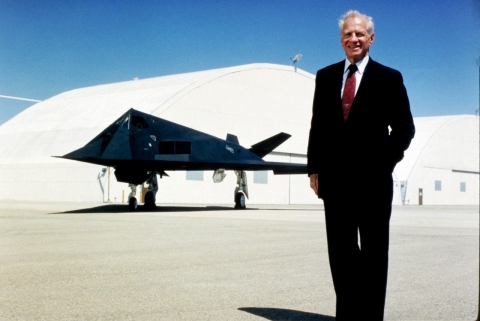
The stealth design leveraged by Skunk Works may have been uniquely American, but it was actually built upon the collective expertise of a number of scientists and researchers – some of whom even came from the wrong side of the Iron Curtain. Famously, the concept that led to stealth was born out of the work of Soviet physicist and mathematician Pyotr Ufimtsev, which had gone largely ignored by his country before catching the interest of Skunk Works’ Denys Overholser.
Ufimtsev’s paper, called Method of Edge Waves in the Physical Theory of Diffraction, had just been translated by the Air Force’s Foreign Technology Division. To most, this 40-page treatise focused on developing a theory for predicting the scattering of electromagnetic waves seemed like little more than dry reading. But to Overholser, the equations buried deep in the paper represented the holy grail of low-observable aviation: a means to calculate an aircraft design’s radar cross-section without even having to build it.
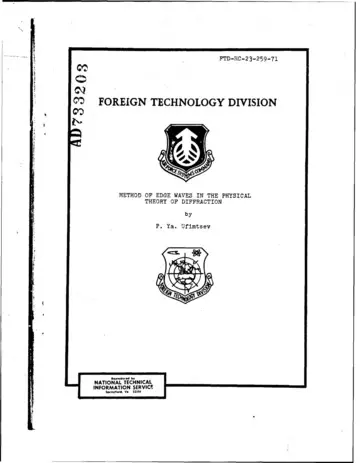
“Ufimtsev has shown us how to create computer software to accurately calculate the radar cross section of a given configuration, as long as it’s in two dimensions,” Denys told Rich, according to 1994 memoir.
“We can break down an airplane into thousands of flat triangular shapes, add up their individual radar signatures, and get a precise total of the radar cross section.”
Armed with this new approach to analyzing aircraft designs, Rich’s team at Skunk Works set about designing an aircraft with a radar cross-section thousands of times smaller than the SR-71-based D-21 supersonic reconnaissance drone, the stealthiest platform they’d built to date. This effort led to a 10-foot wooden model that the Skunk Works team dubbed the Hopeless Diamond. The design was stealthy enough for Rich to win a bet against legendary engineer Kelly Johnson, but the bigger hurdle would be convincing the Air Force that stealth was real.
Related: These are the aircraft used by the Army’s Night Stalkers
A Skunk Works design so stealthy… all radar could see was the pole
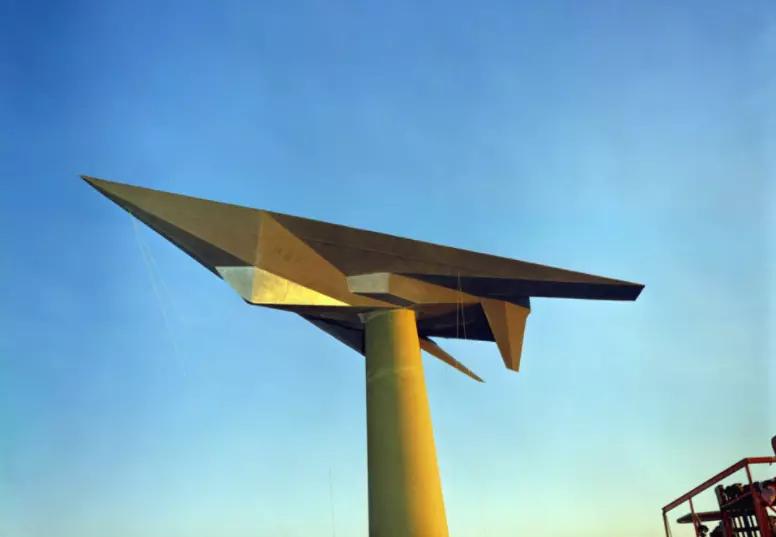
To test their stealth design, the Skunk Works team brought their Hopeless Diamond model to McDonnel Douglas’ radar test range in the Mojave Desert and mounted it atop a 12-foot pole. This was a common practice for testing the radar returns of new aircraft designs. But when the radar array was powered on… something seemed to be wrong.
The radar operator, manning an array just 1,500 feet from the model, looked to Ben Rich and told him that the Hopeless Diamond must have fallen off the pole. Rich looked and confirmed it was still there, but it wasn’t until a blackbird landed on top of the model that the operator registered a radar return. Mistaken, he thought the bird must be the aircraft. As Rich later recounted, it was the first time he felt certain that stealth was the real deal.
In March of 1976, it was time for Skunk Works to prove their design was as stealthy as they claimed to the Air Force. Moving on from the 10-foot Hopeless Diamond, they arrived at the White Sands radar range with a 38-foot mock-up of the aircraft, made of wood and painted black. They were set to compete against Northrop’s stealth design for an Air Force contract, and the Air Force had brought its most powerful radar arrays to size up each firm’s entries.
With five radar antennas, each broadcasting in different frequencies zeroed in on a wooden pole in the tabletop-flat test range, Rich’s team mounted their model and stepped back, waiting to hear how their design would fare against the best radar systems and operators the world had to offer…
But all they could see on radar was the pole.
Related: DOD official says hypersonics vital to future defense strategy
‘Since you’re so damned clever, build us a new pole!’
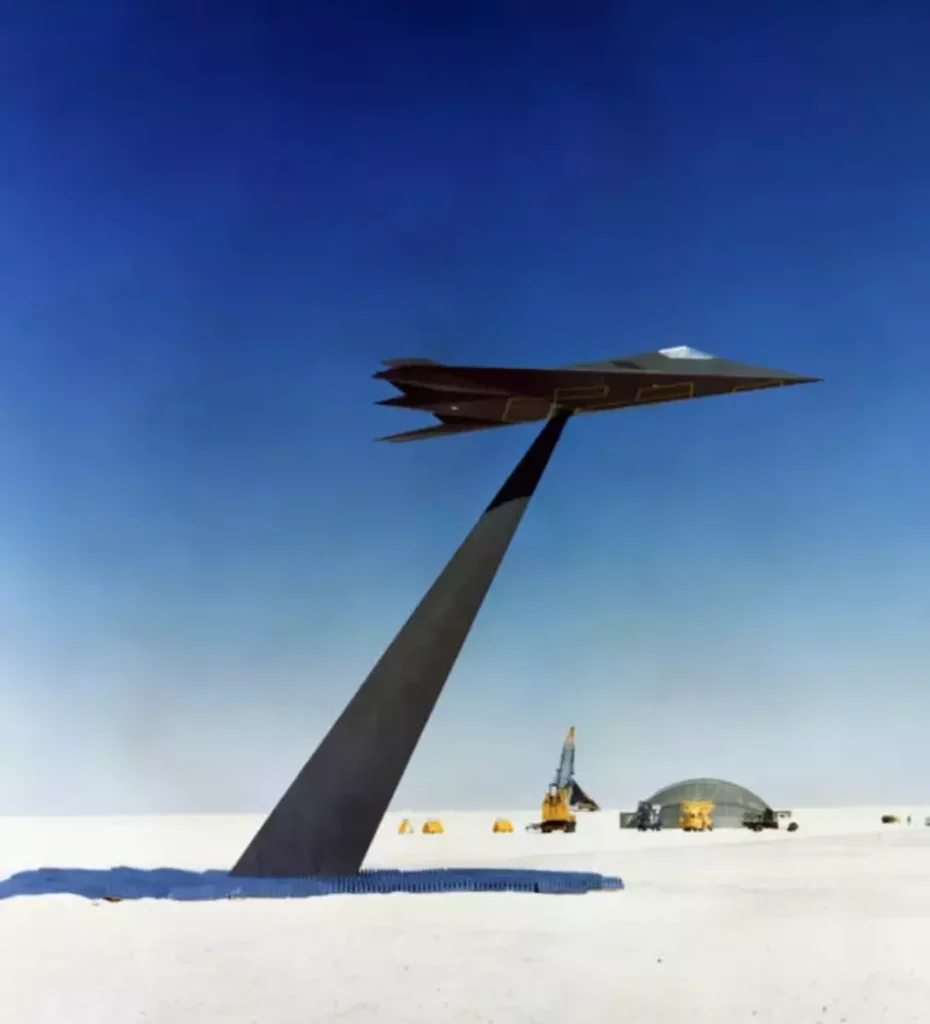
According to an account later written by Denys Overholser, the pole itself registered at minus 20 decibels on radar, which compared to most aircraft, was basically invisible. But compared to the Hopeless Diamond, it might as well have been a barn.
You’d think being stealthier than what had previously been considered a practically “invisible” pole in the desert would be a huge win for the Skunk Works team… but it wasn’t all good news.
“An Air Force colonel confronted me in a fit of pique: ‘Well,’ he snorted, ‘since you’re so damned clever, build us a new pole.’” Overholser wrote.
“I thought, ‘Oh, sure. Build a tower that’s 10 decibels lower than the model. Lots of luck.’”
With no intention of being beaten by a pole, Overholser set about designing a double-wedge pylon for the Air Force that was big enough to mount large models on, but created a radar return just “the size of a bumblebee.”
Designing and building a stealth pole for the Air Force wasn’t an anticipated expense for the Skunk Works team. They ultimately had to split the half-million dollar cost (about $2.6 million today) with Northrop to get the competition going again.
Of course, this ultimately proved to be a better investment for Lockheed than for Northrop at the time. As Overholser recalls, Northrop’s program manager saw the radar return on the new pole when testing recommenced and whispered, “Jesus, if they can do that with a frigging pole, what can they do with their damned model?”
Just one year later, Lockheed’s Have Blue would take its first flight on its way to change aviation history.
This article was originally published in October 2022. It has been edited for republication.
Read more from Sandboxx News
- Did Mattel really create an M16 or is this a great urban legend?
- Back-saving exosuits may someday be standard-issue gear for troops
- The SR-72 timeline: From initial design to ‘Top Gun’s’ Darkstar
- Ukraine set off 4 explosive devices on a freight train operating on the only major railroad connecting Russia and China
- Operation Olympic Games: The first cyberweapon
Related Posts
Sandboxx News Merch
-

‘AirPower’ Classic Hoodie
$46.00 – $48.00 Select options This product has multiple variants. The options may be chosen on the product page -

‘Sandboxx News’ Trucker Cap
$27.00 Select options This product has multiple variants. The options may be chosen on the product page -

‘Kinetic Diplomacy’ Bumper Sticker (White)
$8.00 Add to cart

Alex Hollings
Alex Hollings is a writer, dad, and Marine veteran.
Related to: Airpower

Just how good would an F-22/F-35 hybrid fighter really be?
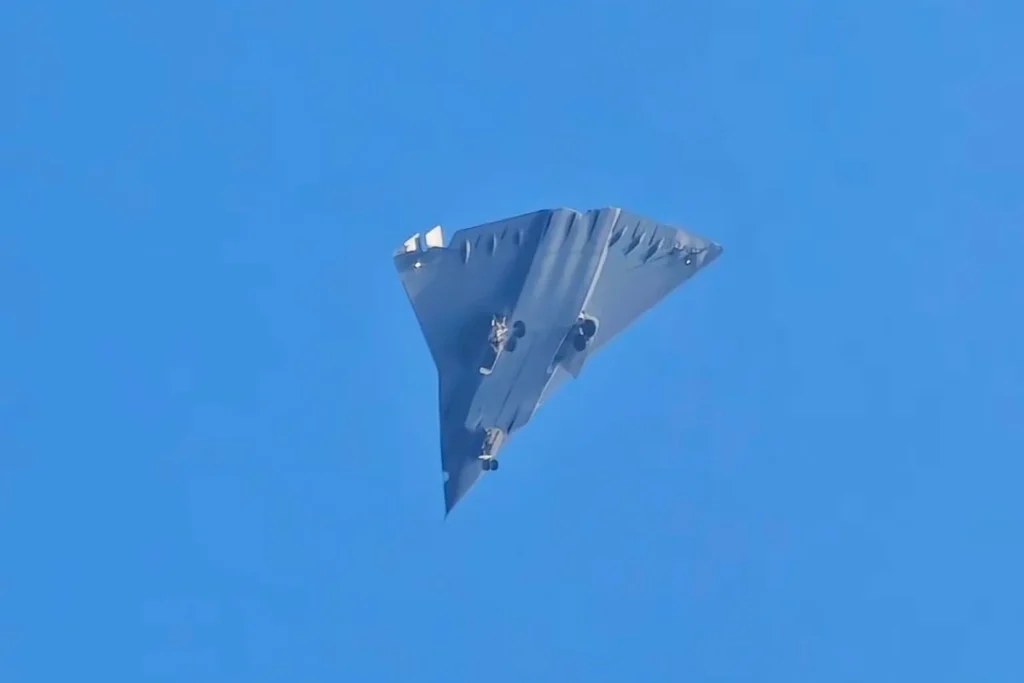
What do we know about China’s new ‘6th gen’ fighters?
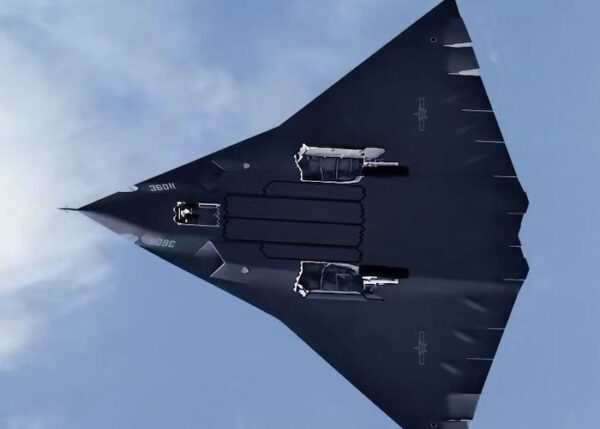
It doesn’t matter if China’s new J-36 stealth jet is a fighter or a bomber

Former Navy SEAL and pioneer combat medicine physician is awarded Presidential Citizen’s Medal
Sandboxx News
-

‘Sandboxx News’ Trucker Cap
$27.00 Select options This product has multiple variants. The options may be chosen on the product page -

‘AirPower’ Classic Hoodie
$46.00 – $48.00 Select options This product has multiple variants. The options may be chosen on the product page -

‘AirPower’ Golf Rope Hat
$31.00 Select options This product has multiple variants. The options may be chosen on the product page -

‘Sandboxx News’ Dad Hat
$27.00 Select options This product has multiple variants. The options may be chosen on the product page
